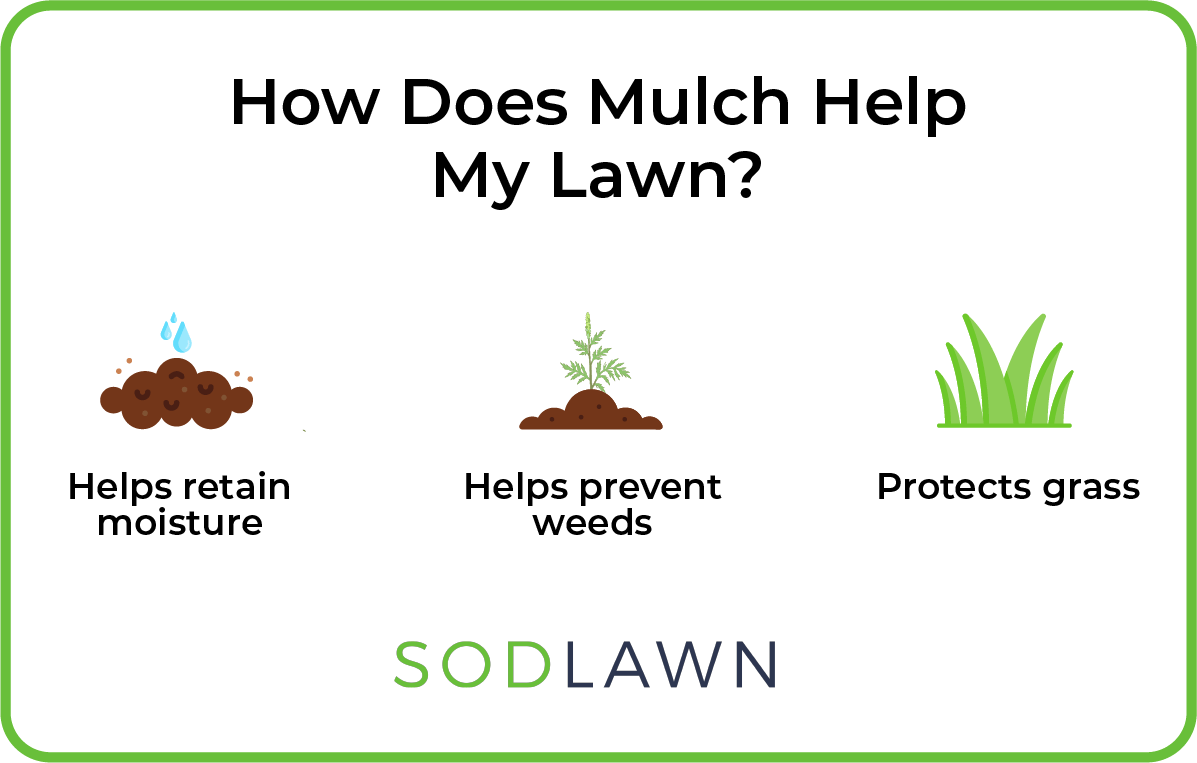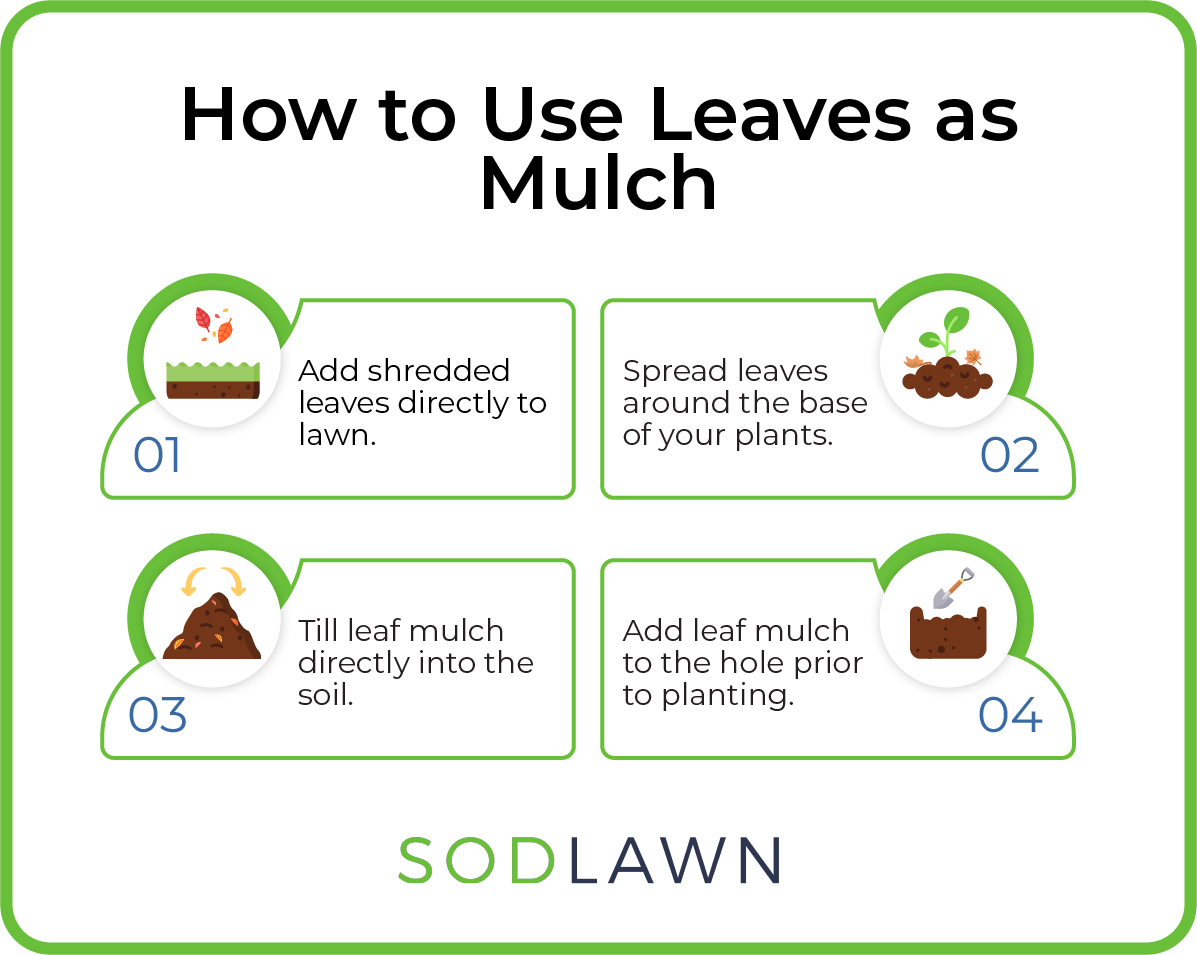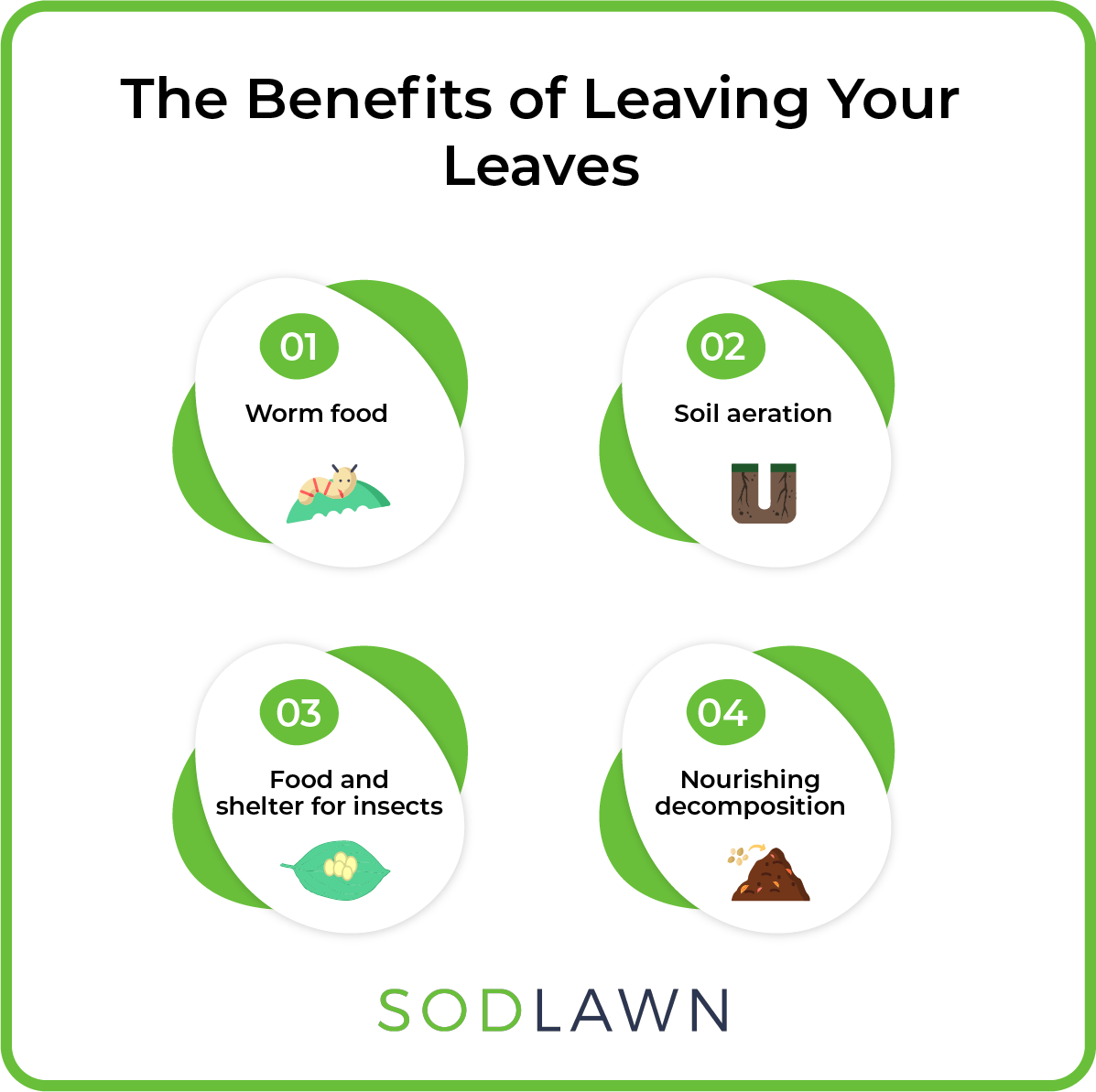It’s that time of year again! The leaves are changing color and falling from the trees. You know what that means…time to break out the rake and get to work, right? Wrong!
This year, ditch the rake and try something new. Instead of spending hours raking up leaves, why not mow them?
That’s right, you can actually mow your leaves and have a beautiful, leaf-free lawn in no time.
Here’s how it works.
Key Takeaways
- Mulching helps your lawn by improving moisture retention, smothering weeds, and protecting grass roots during extreme conditions.
- Leaves can be used as a topdressing of mulch or simply mowed directly onto the lawn.
- There are many types of leaves that are great for your lawn, including maple, fruit tree, and poplar tree leaves, but there are also some that should be avoided (such as black walnut).
How Does Mulch Help My Lawn?

Most people know that mulch is good for their gardens, but did you know that it can also be beneficial for your lawn? Mulching your lawn helps to retain moisture, prevent weeds, and protect your grass from the harsh elements.
One of the primary benefits of mulching is that it helps to retain moisture in the soil. This is especially beneficial in the hot summer months when evaporation rates are high. A layer of mulch will help to slow down evaporation, keeping your lawn looking green and healthy all season long.
Weeds can quickly take over a lawn if left unchecked. One of the best ways to prevent weeds is by applying a layer of mulch. The mulch will block sunlight from reaching the soil, making it harder for weed seeds to germinate.
Mulch also provides protection for grass roots during extreme weather conditions. In the summer, mulch helps to keep the roots cooler by shading them from the sun. In the winter, a thick layer of mulch will insulate the roots and prevent them from freezing.
In short, mulching in the fall – particularly with leaves – can help ensure a gorgeous lawn come spring. No matter what winter throws your way!
Leaves Galore: How to Turn Your Leaves Into Mulch

Fall is in the air and leaves are everywhere! If you’re like most people, you’re probably wondering what to do with all those leaves before you mulch with them. Leaves are an excellent mulch because they help suppress weeds, retain moisture, and add nutrients to the soil as they break down.
The first step is to chop or shred the leaves. You can use a chipper/shredder for this or, if you don’t have one, a lawn mower set on the highest setting will work just fine. The important thing is that the leaves be chopped or shredded very finely—you don’t want big pieces of leaf in your mulch because they’ll take longer to decompose.
To use leaves as mulch, simply add a layer of leaves around four inches deep around the base of your plants, directly on the lawn, or wherever mulch is required.
When mulching around plants like perennials, be sure to leave some space around the stem of the plant so that the leaves don’t smother it.
You can also use leaf mulch on your lawn by running a lawnmower over fallen leaves. This will chop them up into small pieces that can be left on the lawn as mulch.
If you have a garden that is dormant for the winter, you can till leaf mulch into the soil. This will help to insulate the roots of your plants and protect them from frost damage. In the spring, when you’re ready to start gardening again, the leaf mulch will have broken down and will provide nutrients for your plants.
Finally, as you’re planting new plants in your garden, be sure to add some leaf mulch to the hole before you add the plant. This will help to hold moisture in and keep the roots of your plant protected.
And don’t forget—if you have a compost pile, now is a great time to add some leaves to it. As the leaves break down, they’ll add valuable nutrients to your compost that will benefit your plants in the future.
Best and Worst Leaves for Mulching
| Maple Tree Leaves | Maple tree leaves are a great choice for mulching because they are high in nitrogen. This helps to promote the growth of healthy plants. They are also low in lignin, helping to boost nitrogen levels. |
| Fruit Tree Leaves | Fruit tree leaves are particularly great for mulching because they are high in nitrogen, phosphorus, and potassium, yet low in lignin. |
| Poplar Tree Leaves | Poplar trees are fast-growing and common in many parts of the world, making their leaves readily available. In addition, Poplar leaves are relatively thick and durable, meaning that they won’t break down as quickly as other types of mulch. |
| Ash Tree Leaves | Ash leaves are thick and leathery, which helps them to break down slowly. This means that they will provide your plants with a steady supply of nutrients over time. In addition, ash leaves have a high potassium content, which is beneficial for plant growth. |
| Willow Tree Leaves | Willow tree leaves are particularly well suited for mulching due to their high water content. When they decompose, willow leaves release a significant amount of moisture into the soil, helping to keep plants hydrated. |
| Cherry Tree Leaves | Cherry tree leaves are rich in nutrients, making them ideal for mulching. The leaves also add a lovely touch of color to your garden, making it more visually appealing. |
| Black Cherry Tree Leaves | Black cherry tree leaves are great for mulching because they can provide a longer-lasting source of nutrients for your plants. |
| Elm Tree leaves | Elm tree leaves are particularly great for mulching because they are high in nutrients and decompose quickly. This makes them ideal for adding to compost piles or using as a top layer of mulch. Elm leaves also have a high carbon-to-nitrogen ratio, which helps to speed up the decomposition process. |
To Use in Moderation
| Oak Tree Leaves | Oak leaves are high in tannins, which can make them acidic. This can lead to problems for certain plants, such as azaleas and rhododendrons, that prefer a more neutral soil pH. In addition, oak leaves can increase the chances of fungal diseases developing in the mulch. |
| Beech Tree Leaves | Beech tree leaves contain tannins, which make them acidic. This can make the soil underneath too acidic for some plants, leading to yellowing and stunted growth. If you’re going to use beech tree leaves for mulching, add them in moderation to an already established mulch layer. |
| Ginkgo Tree Leaves | Ginkgo leaves are a popular choice for mulch, as they are attractive and easy to find, but they should be used in moderation. The leaves are high in nitrates, which can lead to problems with plant growth if they build up in the soil. In addition, ginkgo leaves are also very slow to decompose, meaning that they can smother plant life if used too thickly. |
Worst
| Black Walnut Tree Leaves | When used as mulch, black walnut leaves release a chemical that inhibits the growth of many other plants. This chemical, known as juglone, is found in all parts of the black walnut tree, but it is most concentrated in the leaves. As a result, using black walnut leaves as mulch can actually damage or kill other plants nearby. |
| Buckeye Tree Leaves | Buckeye tree leaves are bad for mulching because they contain toxins that can be harmful to other plants. When the leaves decompose, the toxins are released into the soil, where they can then be absorbed by other plants. This can damage the roots and foliage of these plants, and in some cases, it can even kill them. |
| Eucalyptus Tree Leaves | Eucalyptus leaves are very oily and fragrant, which can make them attractive to pests like slugs and snails (not to mention cats). They also decompose quickly, so they’ll need to be replaced frequently. |
Leave Some of the Leaves

Did you know that leaving some of the leaves can actually be beneficial for your lawn? Here’s why.
Decomposing leaves can create a unique and rich environment for animal and insect life, which can, in turn, help improve the health of your lawn. Worms, for example, love to eat decomposing leaves. As they munch away, they help aerate the soil, which allows water and nutrients to penetrate more easily. In addition, their decomposing bodies add valuable nutrients to the soil.
Insects also play an important role in leaf decomposition. Certain types of beetles and moths lay their eggs in piles of leaves, which provides food and shelter for their young when they hatch. After a few weeks or months, the larvae transform into adults and fly away, leaving behind nutritious castings that enrich the soil even further.
Of course, you don’t want to leave so many leaves that your lawn becomes suffocated. A good rule of thumb is to remove any leaves that are more than half-an-inch thick. This will ensure that there’s still enough airflow and sunlight reaching your grass while also providing a healthy habitat for beneficial creatures.
The Bottom Line
Believe it or not, mowing your leaves is actually good for your lawn. Mowing finely chops up the leaves, which allows them to decompose quickly and add nutrients back into the soil. This is especially important in the fall when lawns are preparing for winter dormancy.
This fall, forget about raking your leaves and try something new. Instead of spending hours gathering up leaves only to have them blow away in the next strong wind, why not mow them?
Mowing leaves is a quick and easy way to get rid of them without all the back-breaking work of raking. Plus, it’s a great way to recycle all those fallen leaves and turn them into mulch for your garden. So don’t wait—get out there and start mowing those leaves!



